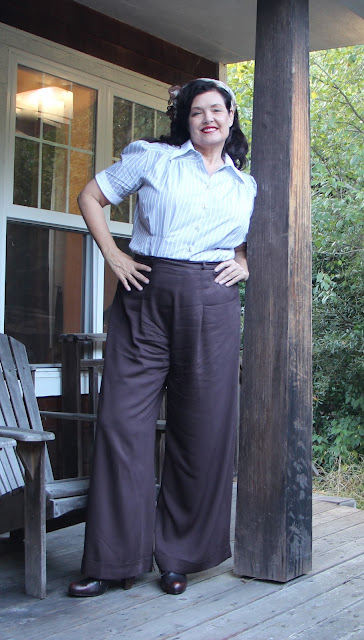1826 cap
I saw this pattern photo in about 8 different facebook feeds and liberated it for my personal use. I genuinely want to address every challenge and my original plan was derailed by, well, a lot (more after the cap). But I do have a lot of cotton organdy remnants from my daughter's cosplay and decided I could do something with them.
I'm still working on my version of the Lowell Mill Dress and decided that an 1826 cap would be the perfect compliment. This cap likely fulfills the 'heritage' part of the challenge. My family is Northern European and roundly middle class so this cap makes sense. But to insure I fit the criteria, I hand sewed it (so it could be sort of 'heirloom' too).
The pattern comes with measurements and I copied them exactly, adding seam allowance. Apparently my head is a lot bigger than I thought and I had to do it over, adding about 2 1/2 inches to the length (ear to ear over the head).
 |
| crown and back before gathers |
There were no instructions so I was on my own for construction, but it really isn't complicated. Fussy, but not complicated. I could have done some research but I WAS running out of time. My first decision was to gather the back section over a length of cotton yarn, like piping. This means that it can't be made larger or smaller but I'm OK with that. I used the same yarn for the piping around the front section. I chose to box pleat rather than gather the ruffles around the edges because it's easier for me.
 |
| 'decorative' tuck |
 |
| finishing edges |
The back and crown pieces are single layers, but I chose to make the front piece double layer. That allowed me to enclose raw edges easily. I did a fitting before I added the lining piece to the front. The front seemed to come to low on my forehead so I took a 1 inch tuck across the top. I'm now calling it a 'decorative feature'.
 |
| tiny strips for bows |
Most of the stitching, including the hem of the ruffles, was done in running stitch. I used back stitch to attach the front to the back and crown, and whip stitched the lining to the front.
Then I made about 5 feet of 1/8 inch wide 'ribbon' for the decoration. I had some poly ribbon that would have worked but I wanted to try and do this like it would be done in 1826. No JoAnns in 1826. Those skinny strips were really annoying. 1/2 strips of fabric folded like bias tape and sewed with running stitch.
True Facts:
First time I've hand sewed 100% of an item bigger than a handkerchief.
First time I've made something just like the picture (I'm excepting the 'decorative' tuck).
I've never been excited by these little caps but I find that there have been times that I really need one when I get 'dressed up' and don't want to wear a big 'ole bonnet.
I will wear this for Regency, without shame.
I'm thrilled that I will only have to curl the front of my hair. The rest will be hidden. Or, maybe even fake curls.
And because it was requested that we have a picture of ourselves wearing the item... (no curls, no makeup, poor lighting, my apologies)
And oh gosh what a month this has been. Started off great with Costume College. And then it went downhill fast. Broken water heater, broken car, broken kitten. Two of those were expensive, but easy to fix. One was just kind of awful. Poor kitty! He knocked a huge owl house over by repeatedly running into it. And he cracked his front paw. He needed to be sedated and restrained for 3 weeks. And during these three weeks I started to clean my sewing room and discovered moths. A LOT of moths. They had eaten a knitted hood and were starting on the mitts. Luckily they had found the fabric but hadn't settled in. I had planned to try and reproduce my great-grandmother's wedding dress. I got fabric and lace. It's gonna have to wait.

 If I ever have someplace to wear it.
If I ever have someplace to wear it.



















